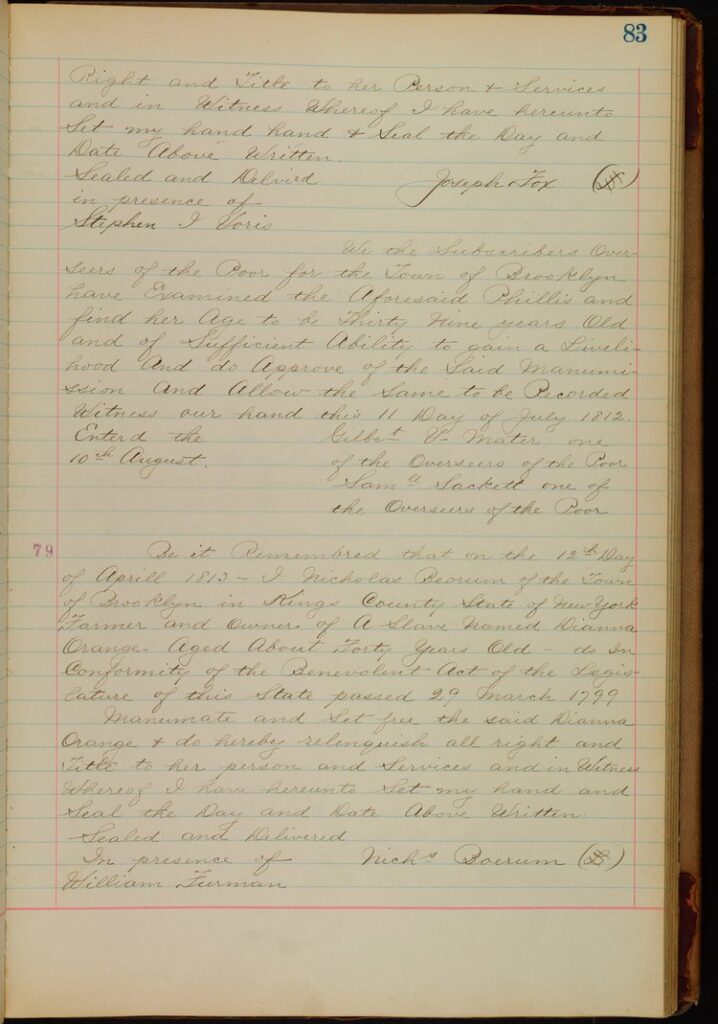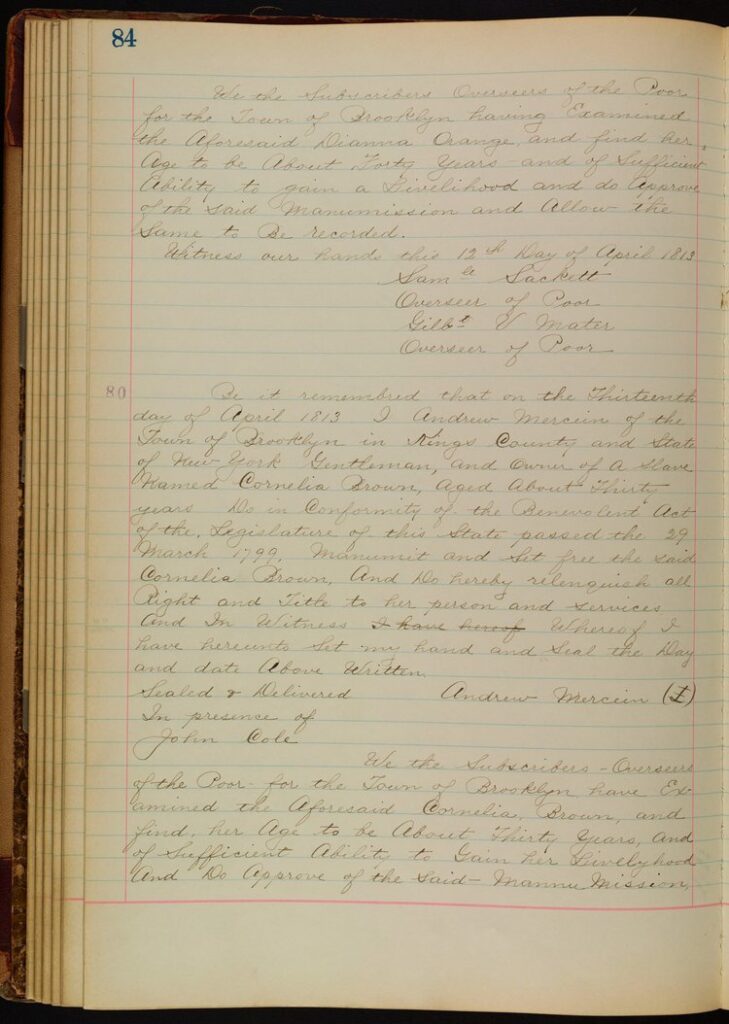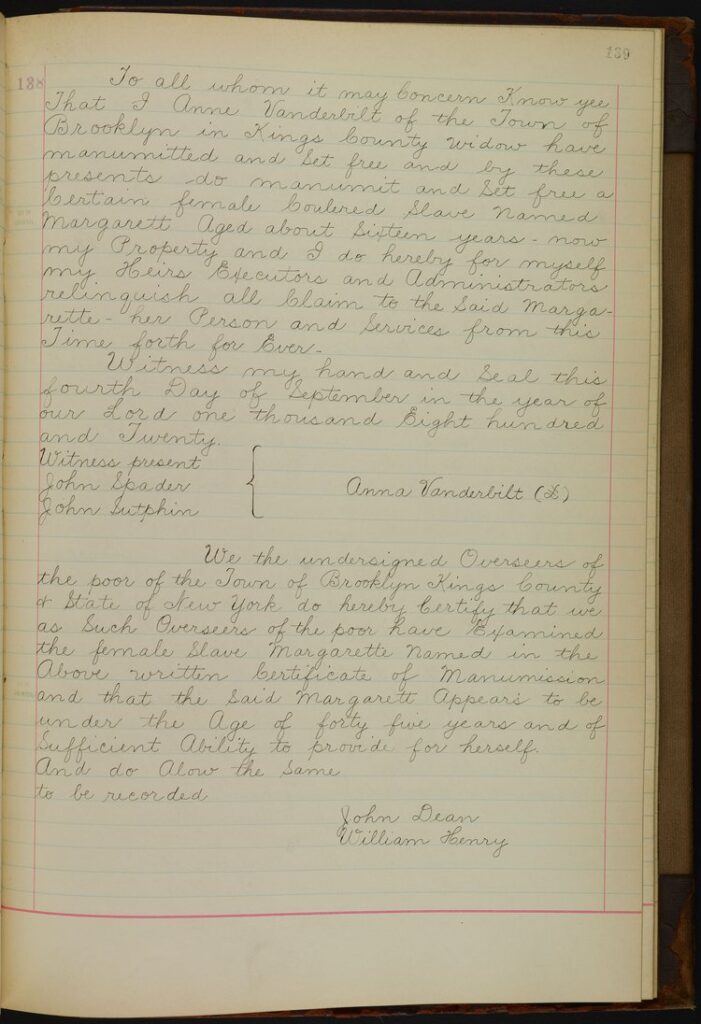This was originally published on the NYC Municipal Archives Blog for the NYC Department of Records & Information Services. https://www.archives.nyc/blog/2022/7/6/the-genealogical-possibilities-of-manumissions-in-the-old-town-records
The Department of Records and Information Services is currently digitizing New York colonial and early statehood administrative and legal records dating from 1645 through the early 1800s under a grant generously funded by the National Historical Publications and Records Commission. The records pertain to Dutch and English colonial settlements in New York City, western Long Island, and the lower Hudson Valley.
Families have a sense of themselves. Who they are, where they came from, how they came to be the group they are now. It’s a sense of identity. Many African Americans today are exploring their genealogy but can only go so far because of the legacy of slavery in America and a past obscured by the lack of records. However, there are records in the Municipal Archives that might help fill this knowledge gap. One collection is the Old Town Records, which includes documentation of manumissions and slave births in New York City. While the information may not be new, access to it over the years has been limited. This is changing thanks to a new digitization project. With a grant from the National Historical Publications and Records Commission (NHPRC), the Municipal Archives has been processing the collection. It is comprised of records created in the villages and towns that were eventually consolidated into the Greater City of New York in 1898. They date back to the 1600s and consist of deeds, minutes from town boards and meetings, court records, tax records, license books, enumerations of enslaved people, school-district records, city charters, and information on the building of sewers, streets and other infrastructure.
“Manumission” is a legal term that is similar to “emancipation” but slightly different in the way it was performed. Manumission refers to the legal release of enslaved people when slavery is still sanctioned by law, as opposed to emancipation, which follows abolition and releases all people formerly enslaved. Most slave manumissions were conferred by slaveholders who released their slaves either by a living deed of gift or last will and testament. For the Record examined the subject in The Slow End of Slavery in New York Reflected in Brooklyn’s Old Town Records. Additionally, several collections in the Municipal Archives contain records documenting enslaved people, notably the Common Council Papers. A sampling of NYC Slavery Records can be viewed online in “From the Vaults.”
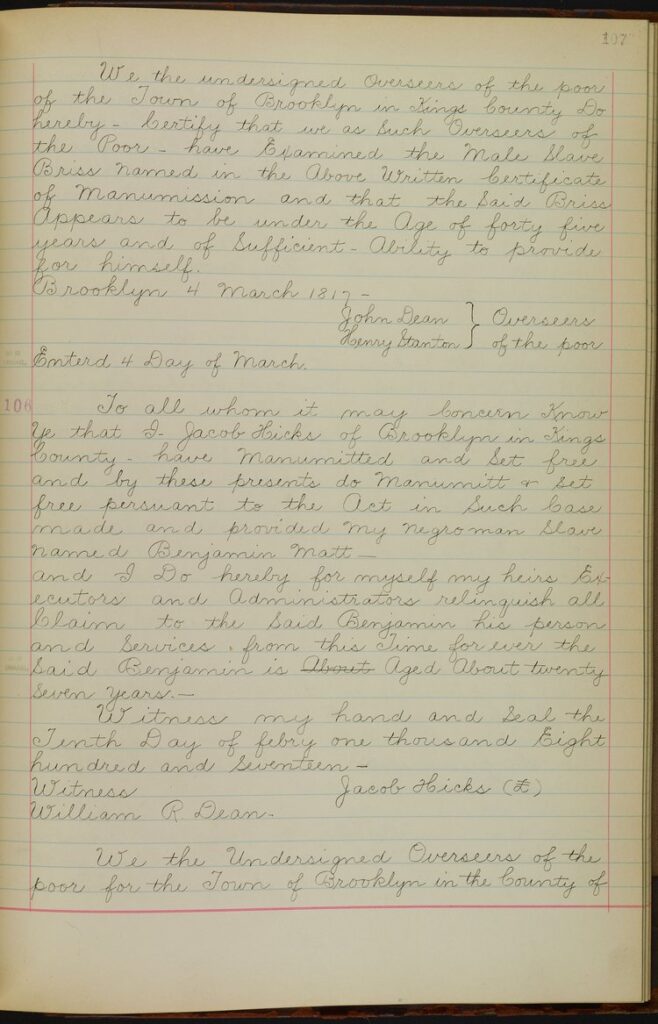
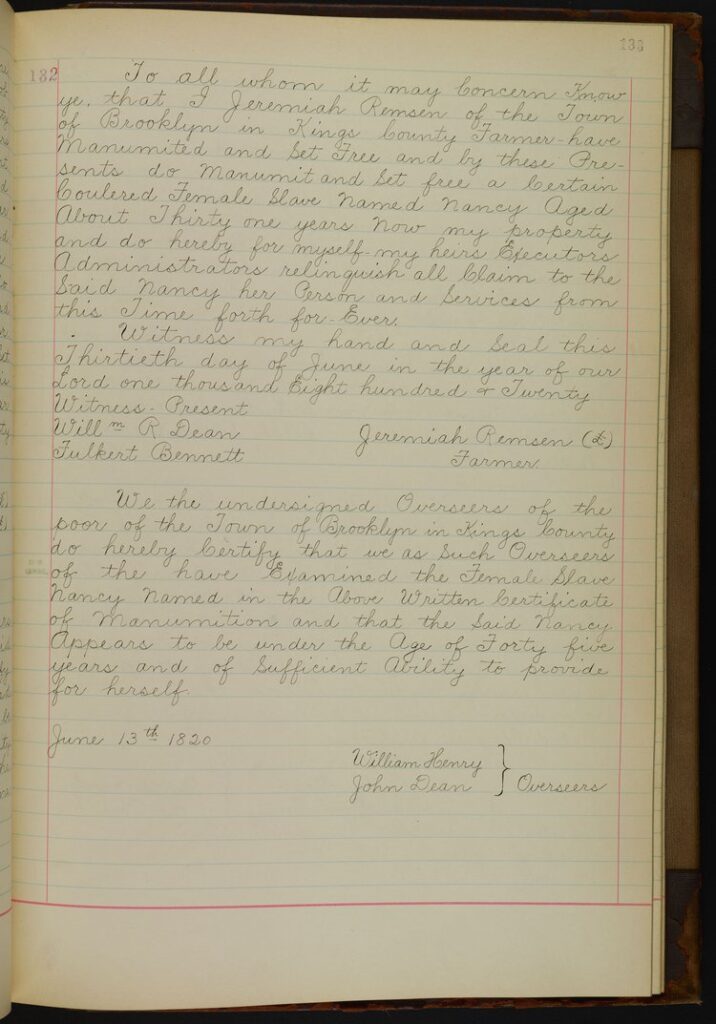
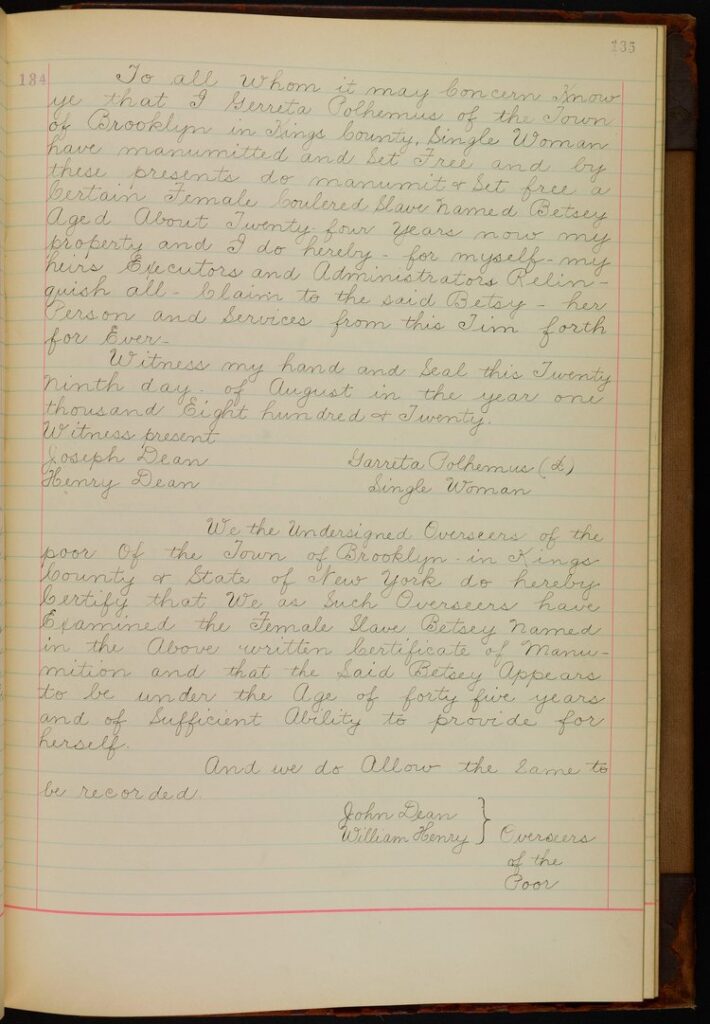
More than 11,000 pages from the 189 Old Town Ledgers have been digitized to date. The digitization is 20% complete and the final count will be exponentially higher at the project’s end. This process can seem slow at times, requiring care for the material that’s being worked on. Sometimes there are opportunities to review the books being worked on and sometimes the entries stick out. This was the case with many manumissions as they were digitized for the collection. Individual names of former slaves along with their former owners are in plain ink on the pages—their lives dramatically changed so many years ago. Most manumissions are only a few simple lines of text, yet their ramifications are so powerful.
I’m not African American but I am a New Yorker. I’ve lived in Brooklyn for over twenty years and am familiar with the city’s history. I was aware of the city’s past connections to slavery but I had never seen written evidence of it until I began digitizing the records of places I walk through so often—Bushwick, Gravesend, Sheepshead Bay and other locations. People of all heritages live in these places now, but at the time the manumissions were written these were small farm towns and slavery was common. It is easy for that past to never come to mind; it’s a stretch of imagination to envision the humble towns they were when walking in the urban centers they have become. But that past is very real and the people in the Old Town Records Collection walked many of the same streets we walk today. It is possible their distant relatives may also tread those same streets and not know the connection to their past.
I recently saw similar records of emancipation change how a person thought about herself. After I had been digitizing this material during the day I put on Finding Your Roots, a popular TV show about genealogy on PBS. [https://www.pbs.org/weta/finding-your-roots/] The program has aired over eight seasons and has previously consulted the Municipal Archives to research its guests’ histories.
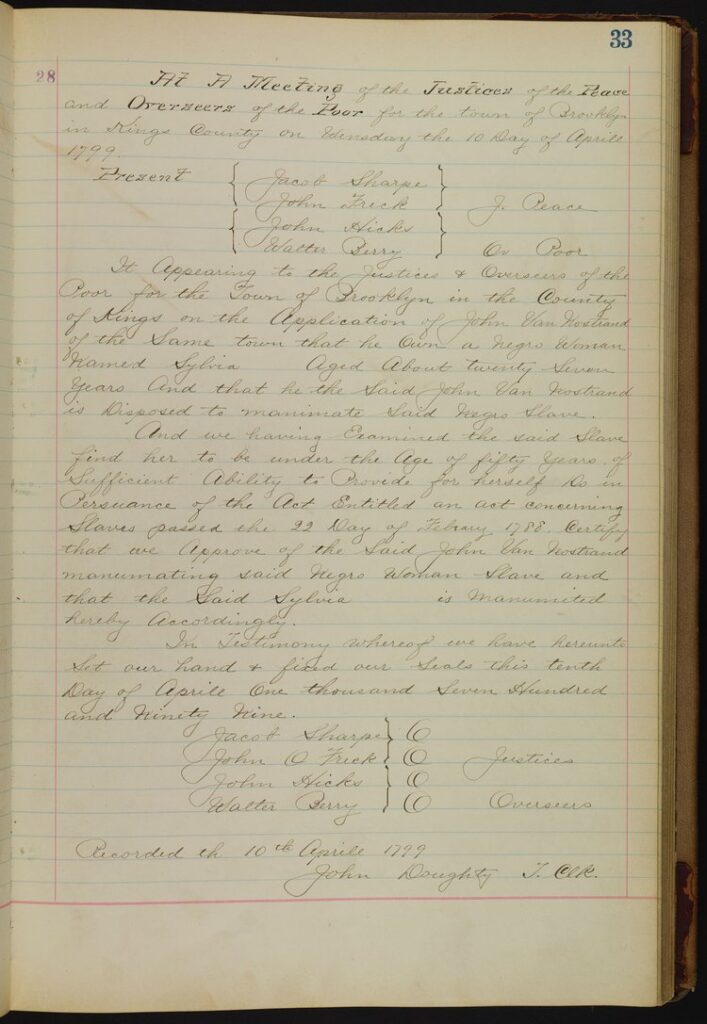
This was an episode that featured the musician/actress Queen Latifah and as the story of her heritage unfolded she found some of her ancestors had been manumitted from slavery. The documents presented on the show were from another state and another archive but their value was the same as the lines of text I had digitized during the day. It was freedom; it was another life; it was a new beginning for that person and their family. Those events occurred so long ago and as Queen Latifah read out the words for the camera she had no idea this had ever happened. [https://www.pbs.org/weta/finding-your-roots/watch/extras/queen-latifah-meets-the-woman-that-freed-her-ancestors]. As she talked about what she read she noted that it changed the way she thought about herself, her own personal struggles and how she thought of her family. She was eager to share that information with the people she holds dear. Her whole family would see their history differently. They would see themselves differently. A family that didn’t previously know their past, a family that didn’t know with whom or when their freedom came would now have an entire history opened up by a few lines of writing found in a book in an archive. As the TV show played I reflected on the digitization I perform and knew the same impact is possible through the Old Town Records Collection. The way entire families see and know themselves could shift in an instant from the few words the Municipal Archives makes electronically accessible.
Many things shape family identity but few are as profound and long lasting as information. Personal past. Collective past. They can shape who you are, who you think you are and who you can be. Who an entire family can be. The wider availability of the Old Town Records Collection has the potential to do that for so many families who research their genealogy. We can look forward to more Americans finding themselves.
